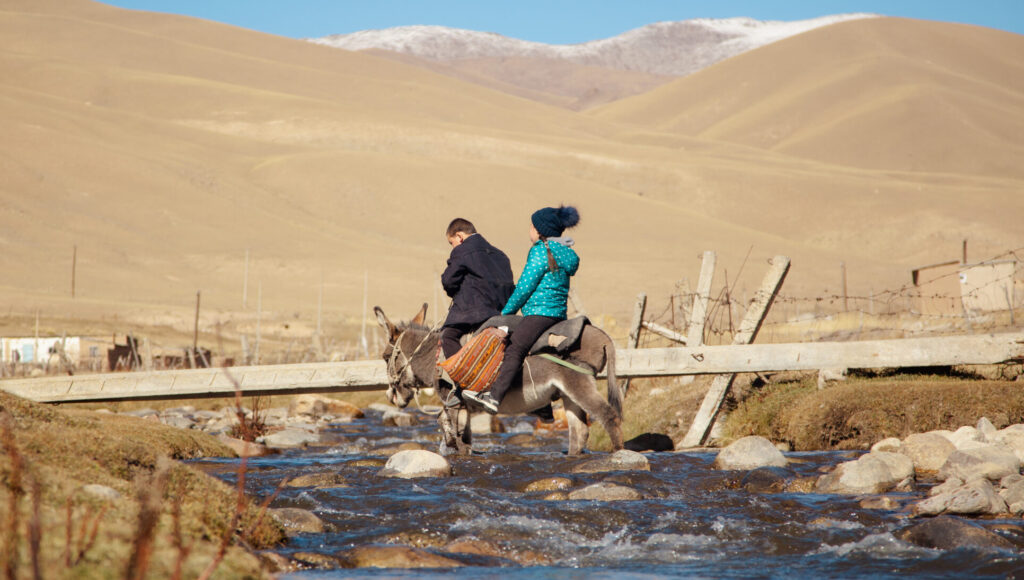First-grader Nurislam, and fourth-grader Nurzada, walk several kilometers through the scenic mountains of Tian Shan every day on a donkey to attend classes at the Kylych Rysmendiev school, in the village of Lahol, Naryn region.
Naryn region is the coldest point in Kyrgyzstan, in the winter season temperatures drop to below 40 degrees Celsius. The villages are scattered over the mountains. The distances between them are dozens of kilometres. In fact, there are no roads. During the winter it is impossible to get to school at all. There are frequent interruptions in communication, essentially villagers across these mountains are cut off from each other and the rest of the world. There was no Internet in schools.
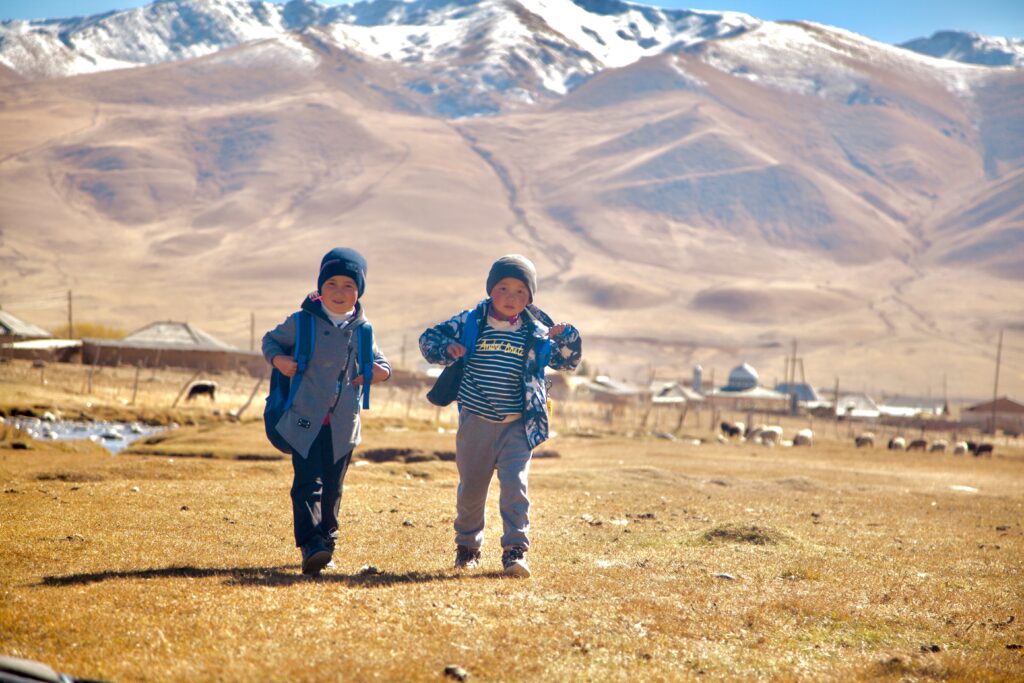
Students walking to the school named after Kylych Rysmendiev in the village of Lahol, Naryn region. (©UNICEF/Kyrgyzstan/2022/Tynchtyk Nurbekov)
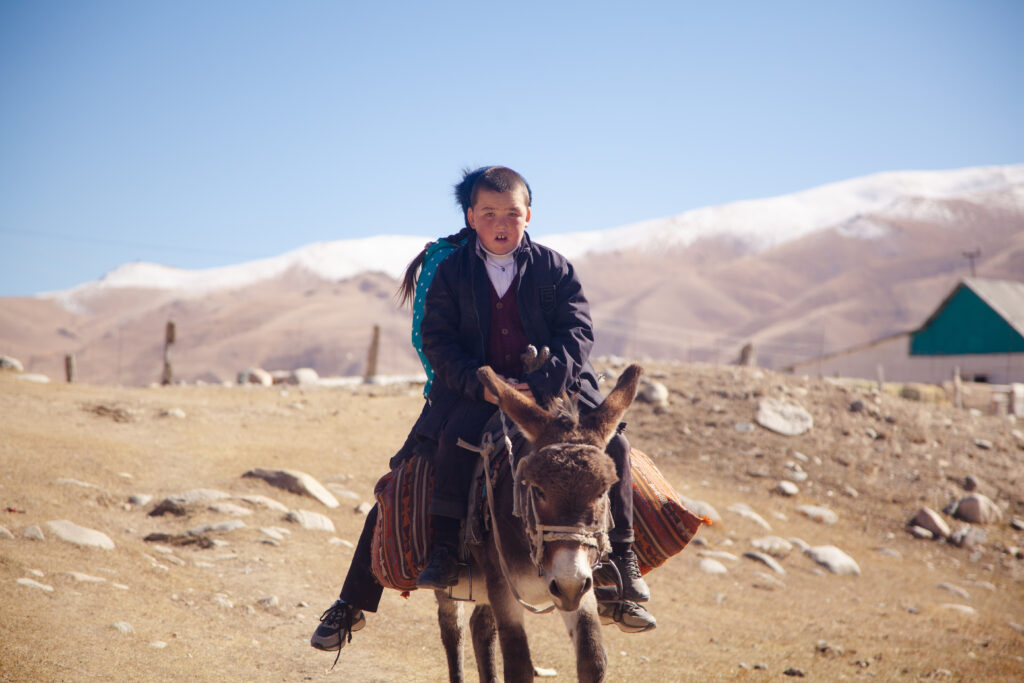
Nurzada and Nurislam use ‘kurdjun’, a nomadic bag thrown over the saddle, to carry their backpacks. (©UNICEF/Kyrgyzstan/2022/Tynchtyk Nurbekov)
“We know what the Internet is. We really like to watch and learn about different countries and animals. It would be good if there was a big screen at the school and it would be possible to see the animals more closely” say the children at the school.
Schoolchildren are at the age where they are most curious and inquisitive. A great love can be instilled in learning. And this age, teachers say, a lot can be done with the help of bright pictures and presentations, short videos, and educational materials to stimulate learning beyond their communities and open the children to a world where they can imagine more than their surroundings
Back in 2020, the Ministry of Education of the Kyrgyz Republic prepared a series of useful information portals for schoolchildren, for use for both self-study and as a manual in the classroom. But due to the lack of Internet connectivity in schools, a number of locations in the country were unable to access these materials.
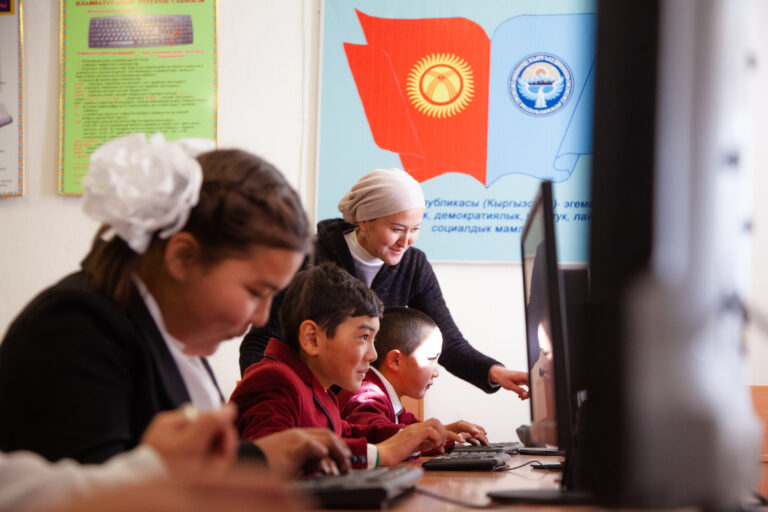
Social teacher Gulnara Akylbekova is holding one of her first lessons in the equipped classroom. (©UNICEF/Kyrgyzstan/2022/Tynchtyk Nurbekov)
Thanks to Giga, more than 500 children from remote schools now have access to the Internet. Their classrooms of natural and mathematical sciences will be equipped with imaginative content. UNICEF has already laid an Internet cable, and the organisation’s partners will deliver computers and projectors there.
“We are equipping 5 classrooms where different subjects such as mathematics, chemistry, biology and physics are taught; and there will be a computer and a projector. Another 15 computers and a projector will be placed in the informatics room. We are also installing Wi-Fi routers so that you can connect to the Internet, for example, sitting in the library,” says Maksat Ilim uulu, a Head Teacher at Rysmendiev school in the village of Lahol.
And his colleague, social pedagogue Gulnara Akylbekova, believes this is a great incentive for children to come to school and withstand the tough terrain. Some of these children travel 25 kilometres through the mountains to get to school every day.
“Out of 356 children, 140 come in minibuses from neighbouring mountain villages. And to enable them to overcome the difficult path, we need to make the learning process as interesting and exciting as possible. Otherwise, the majority will refuse to attend school. And it will become a problem for everyone. The Internet will help increase interest in learning, I'm sure.”
Gulnara Akylbekova, social pedagogue
Telman Sydykov, the head of the technical department of OJSC Kyrgyztelecom in the Naryn region, says that the most difficult part of the work was when cables were pulled from the Naryn-Torugart highway over the mountains at an altitude of more than 2000 meters.
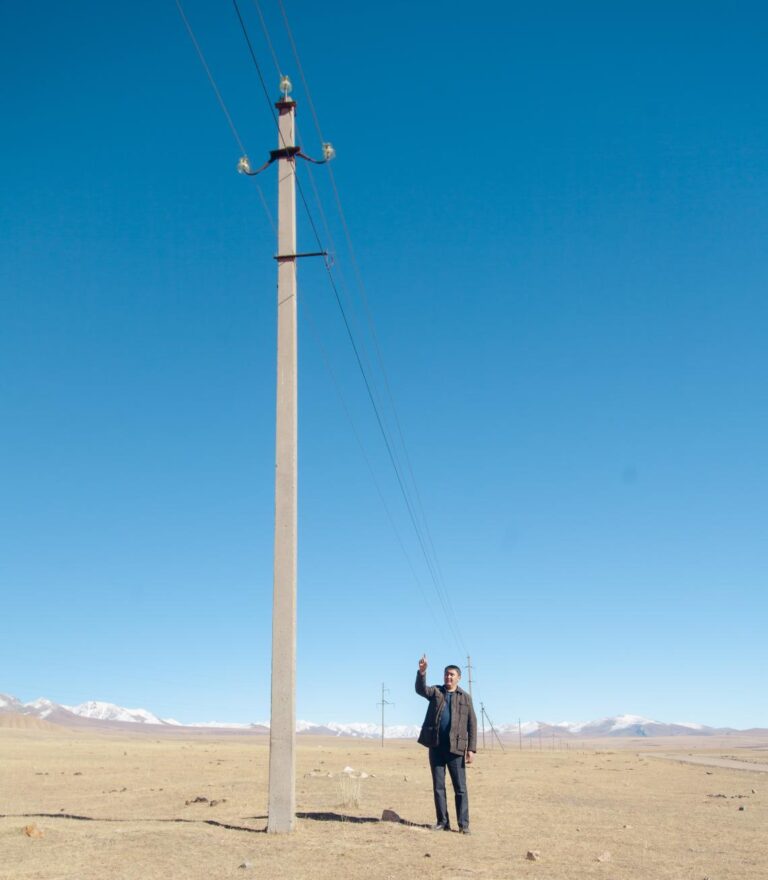
Telman Sydykov from telecom company points at the result of their hard work – wire which now connects remote mountainous village to the Internet. (©UNICEF/Kyrgyzstan/2022/Tynchtyk Nurbekov)
“There was no road. The drum on which 4 kilometres of wire was wound, weighing a ton, had to be lifted up to the mountain on a truck, and then stretched by hand from pole to pole. It was important to make it before the evening – it was dangerous to leave the coils or to cut off the cable too after dark. We worked as fast as possible. For this, three groups of 15 people were assembled. But the weather made its own plans. We rested for a week because it was raining heavily. But still, in three weeks we stretched 60 kilometres of cable: from the coupling to the village. The main thing was to finish it before the start of the school year. And we managed to do everything much faster because we were committed to seeing this through,” he shares.
Then the case completely spun like a spinning top. In three days, the workers connected the school itself, laid and adjusted all communications. It turned out to be great collaborative work. And it also included the participation of the “Vostokelectro”, an electricity company, which offered to use their poles which meant that we didn’t have to lay out new w ones in the mountains. After all, in the end, not only schools will use this cable connection capability.
“We specifically obtained an eight-core cable, not only because it is designed for severe weather conditions, but because in the Naryn region, it can get as cold as minus 40. But we also did so because residents can connect to it without losing the quality of the connection at schools. The third plus is that its shelf life is as good as unlimited; the wire will hang for a hundred years for sure,” concludes Telman Sydykov, a technician at Kyrgyztelecom.
A total of 42 unconnected schools from hard-to-reach areas were proposed by the Ministry of Education for the project. Five institutions with the largest number of students and teachers were chosen.
“There are modules from the Ministry available online on Moodle. They improve the skills of teachers. And a great value for us is that now our teaching staff have access to these facilities,” says Mamatov Kubanychbek, a deputy director for educational work.
Now UNICEF representatives, together with specialists from the Ministry of Education, give recommendations and outline the important conditions of the project:
- The Internet, especially information portals, should be accessible to school children.
- Administrations need to facilitate access through open classroom hours or school Wi-Fi coverage.
- The school should ensure that teachers do not forget to draw useful information and have easy access to the connection.
The project should also link the Ministry with the school administration so that instructions and valuable recommendations disperse faster across the regions. The department pays for the traffic, and it will also control the use of the resource.
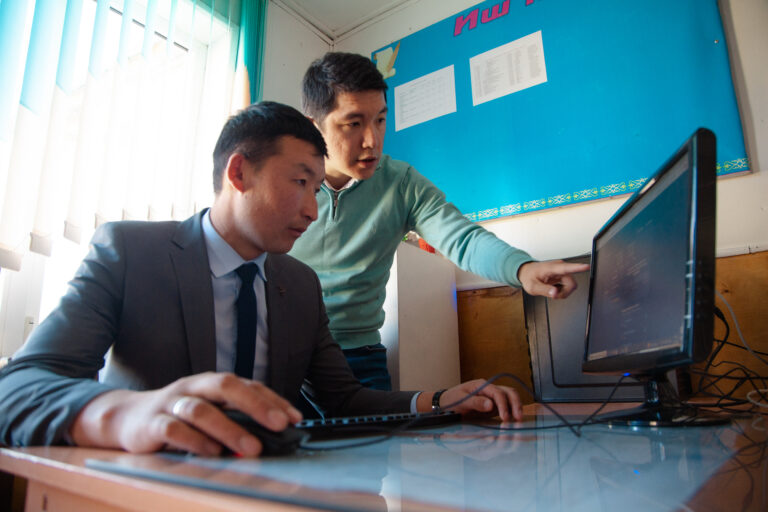
School administration from the hard-to-reach region together with UNICEF representative is testing the access to the Internet. (©UNICEF/Kyrgyzstan/2022/Tynchtyk Nurbekov)
Meanwhile, the kids of the neighbouring village, where Internet cables have already been laid, are already planning what they will watch once they too get connected. There are only 175 children per 500 inhabitants. In addition, a new school is being built for them and they can’t wait to enter a new class, with new computers.
To the question of what they would like to see, they answer unambiguously – some experiments in chemistry and physics. The teachers smile, and they say, thanks to the project, we will probably soon learn about new scientists from the Naryn region in the not-so-distant future.
The article was originally published on the UNICEF Kyrgyzstan blog.

